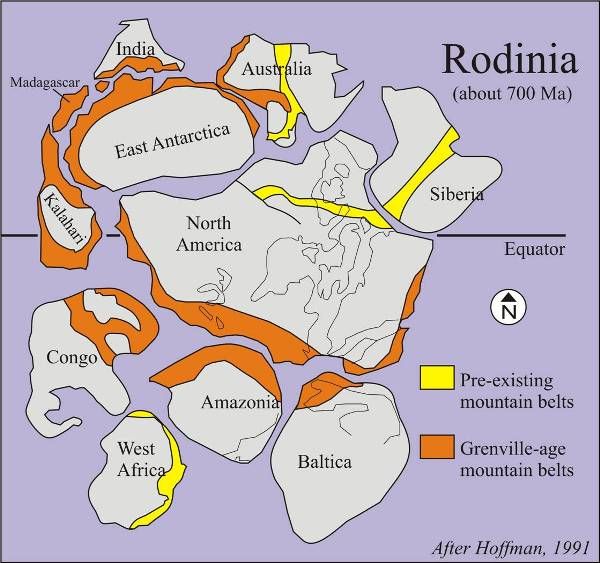North Carolina
Type |
Symbol |
Year Est. |
|---|---|---|
State Rock |
Granite |
1979 |
State Mineral |
Gold |
2011 |
State Precious Stone |
Emerald |
1973 |
State Fossil |
Megalodon Shark Teeth |
2013 |
State Rock: Granite
State Mineral: Gold
The chemical symbol for gold is Au, and gold is one of the unique minerals that, in its pure form, is composed entirely of one element. It has a hardness of 2.5 to 3 on the Mohs hardness scale meaning that it actually is very soft (your fingernail is 2.5). For this reason most gold jewelry is mixed with another metal to prevent scratching and bending easily. The karat rating of the gold represents it's purity, where 24 karat is 99.9% pure, 22 karat 91.7%, 18 karat 75%, and so on. Gold naturally does not corrode or tarnish, so even when it is mixed with other metals it usually has a resistance to tarnishing, enhancing its value for jewelry. When gold is found in place, the highest grade of gold is often found in association with quartz veins. Currently gold is considered one of the most valuable metals on Earth, being used as the standard for most money (gold standard). Gold is often formed initially in relation to volcanic regions, where fluids associated with volcanoes carry the heavy metals up towards the surface and deposit them in rocks. These are found in areas of current or former subduction zones, places where two plates came together forcing one place down and melting it, while the other plate is forced upwards into mountains. Afterwards, erosion will take the gold out of the mountains and carry them down stream. However, since gold is so dense it does not travel easily down rivers and will often settle to the bottom of the river within the rocks and mud within the river sediment. These gold deposits are known as placer deposits and are the primary place where gold panners find gold. They can then use the locations of these placer deposits to backtrack to the original sources of the gold within the streams.
Related: Alaska State Mineral - Gold; California State Mineral - Gold; South Dakota State Jewlery - Black Hills Gold
State Precious Stone: Emerald
State Fossil: Megalodon Shark Teeth
Within the fossil record, sharks have a fairly long history. Scientists have fossil shark material that dates back over 420 million years ago during the Silurian. However, there is very little of a shark that is typically preserved. In general, the skeleton of sharks, as well as all chondrichthyans, which includes rays and skates, are made up of cartilage. Cartilage is a material that breaks down very quickly and hardly is ever fossilized. Fossilization is the process where organic material is turned into stone by a one-to-one replacement of the organic material with more permanent minerals such as silica (quartz) or calcite. The fossilization, or permineralization, process causes the teeth to be a wide variety of colors depending on the elements within the water that replaced the organic materials. Even a little of something, such as iron, can turn a normally white item into a very rich red color. Cartilage, however, breaks down very quickly and so the fossilization process does not typically occur. However, there are several features of a shark that can be preserved with the teeth being the most common. Shark teeth are made up of dentin, a material harder and denser than bone, and covered with an enamel shell. On top of that, sharks typically go through tens of thousands of teeth a year. So one shark could potentially produce 50,000 teeth over its lifetime. Fossilization potential also exists for the denser cartilaginous sections of the shark skeleton as well, just not as highly as the teeth. These include the dense core of the vertebrae, parts of the jaw, the rostral (nose) node, and on some sharks, the spines. Dermal denticles are another fossilization potential. They are tiny pieces of bone that are scales on the outer surface of the shark skin.
Shark teeth, however, can tell us a lot and not very much about the shark. Shark teeth are amazingly varied, even within a shark. Look at the picture above to the right. The teeth can vary in males to females, in juveniles to adults, in the top and bottom jaws, as well as where they are located within the jaw. Therefore, by just finding the teeth it is nearly impossible to determine how many species once existed because the teeth aren't attached to anything anymore (the jaws tending to all degraded away), or even what species an individual tooth came from. Loose teeth are also very difficult to date. The only real indicator of the age of a shark tooth is to find the sedimentary rock bed that it came from and date that. The one exception to that rule is the shark Carcharocles megalodon, more commonly referred to as just Megalodon. Due to the extreme size of their teeth, they are actually fairly easy to identify. However, a full jaw of Megalodon teeth has never actually been discovered and all representations of them are completely made up by people who think what they might have looked like. In general, shark teeth can be a fairly abundant and cool fossil collectible, depending on the local fossil collecting regulations. Sharks are vertebrates and therefore would fall under any vertebrate fossil collecting restrictions.
Related: Georgia State Fossil - Shark Tooth
References
https://statesymbolsusa.org/states/united-states/north-carolina
Geology of North Carolina's National Parks
Through Pictures
(at least the one's I have been to)
Great Smoky Mountains National Park
National Parks visited but I have no pictures (at this time) to do a geology post
(link directs to NPS site)
Blue Ridge Parkway (2003)
Great Smoky Mountains National Park
Visited in 2003
Way back in 2003, we visited the Great Smoky Mountains and camped out in the park, as we traversed the eastern states.
.jpg)
Obligatory entrance sign shot. The history of the Great Smoky Mountains begins long ago.
.jpg)
Prior to the formation of the supercontinent Pangea, there were other supercontinents, one of which was named Rodinia. It was during the continental collisions that formed Rodinia (around 1.3 to 1.0 billion years ago) that much of the bedrock of the Great Smoky Mountains was formed due to the incredible compressional forces. During this time many of the sedimentary rocks that had previously been deposited were turned into the over billion year old metamorphic and igneous rocks that forms the core of the park. These rocks can be found outcropping in the southeastern parts of the park.

The supercontinent Rodinia. Image courtesy of Public Water.
During the formation of Rodinia, the Great Smoky Mountains were located between the North America continent (known as Laurentia) and the Amazonia continent (seen above in the orange stripe). These proto-Great Smokys were formed during the mountain building event known as the Grenville Orogeny. Rodinia then started to break up around 750 million years ago.
.jpg)
Following the break up of Rodina, a wide sea opened up between what will become North America and Africa. This was known as the Ocoee Basin and was formed near present-day western Carolinas, eastern Tennessee, and northern Georgia, where the Great Smokies sit today. Within this ocean basin sedimentary rocks started to be formed. These sandstones, shales, limestones, and other sedimentary rocks formed a huge group of rocks known as the Ocoee Supergroup. More sedimentary rocks were then deposited on top, including large amounts of limestones filled with fossils of crustaceans and worm burrow trace fossils.
.jpg)
Following the deposition of the sedimentary rocks, the continents took an about face and started to head back towards each other once again about 470 million years ago to create another super continental "bounce". This time the eastern edge of North America once again crashed into Africa, forming Pangea 310 to 245 million years ago. It was during this collision that the Great Smoky Mountains, or at least the massive mountains they originated as, were formed, along with most of the Appalachian mountains along the eastern coast of North America. These mountains were said to be even bigger than the present day Rocky Mountains.
.jpg)
Around 240 million years ago, Pangea began to break apart, continuing the continental bounce, eventually forming the Atlantic Ocean. During this time, the erosion of the Great Smoky Mountains continued, depositing sediment from the mountains off the coasts towards the Gulf of Mexico and the Atlantic Ocean basins. Over time, erosion greatly reduced the mountains from the once giants that had filled the area, producing the mountains as we see them today.
References
https://www.nps.gov/grsm/learn/nature/geology.htm#10/35.6238/-83.5757
http://public-water.com/2020/05/
https://www.sciencedirect.com/topics/earth-and-planetary-sciences/grenvillian-orogeny


